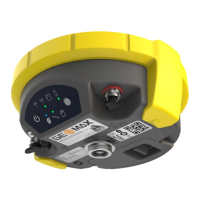DANGER
Risk of being struck by lightning
If the product is used with accessories, for example on masts, staffs, poles, you may increase
the risk of being struck by lightning. Danger from high voltages also exists near power lines.
Lightning, voltage peaks, or the touching of power lines can cause damage, injury and death.
Precautions:
▶
Do not use the product in a thunderstorm as you can increase the risk of being struck by
lightning.
▶
Be sure to remain at a safe distance from electrical installations. Do not use the product
directly under or close to power lines. If it is essential to work in such an environment con-
tact the safety authorities responsible for electrical installations and follow their instruc-
tions.
▶
If the product has to be permanently mounted in an exposed location, it is advisable to
provide a lightning conductor system. A suggestion on how to design a lightning conductor
for the product is given below. Always follow the regulations in force in your country
regarding grounding antennas and masts. These installations must be carried out by an
authorised specialist.
▶
To prevent damages due to indirect lightning strikes (voltage spikes) cables, for example
for antenna, power source or modem should be protected with appropriate protection ele-
ments, like a lightning arrester. These installations must be carried out by an authorised
specialist.
▶
If there is a risk of a thunderstorm, or if the equipment is to remain unused and unatten-
ded for a long period, protect your product additionally by unplugging all systems compon-
ents and disconnecting all connecting cables and supply cables, for example, instrument -
antenna.
Suggestion for design of a lightning conductor for a GNSS system:
1. On non-metallic structures
Protection by air terminals is recommended. An air terminal is a pointed solid or tubular rod
of conducting material with proper mounting and connection to a conductor. The position of
four air terminals can be uniformly distributed around the antenna at a distance equal to
the height of the air terminal.
The air terminal diameter should be 12 mm for copper or 15 mm for aluminium. The height
of the air terminals should be 25 cm to 50 cm. All air terminals should be connected to the
down conductors. The diameter of the air terminal should be kept to a minimum to reduce
GNSS signal shading.
2. On metallic structures
Protection is as described for non-metallic structures, but the air terminals can be connec-
ted directly to the conducting structure without the need for down conductors.
a Antenna
b Support structure
c Air terminal
Lightning conductors
Air terminal arrangement,
plan view
Safety Directions 7

